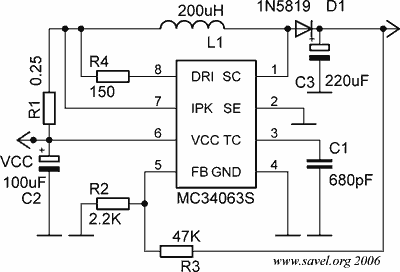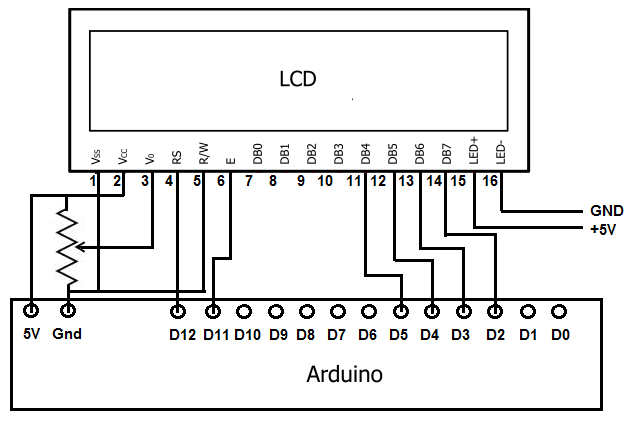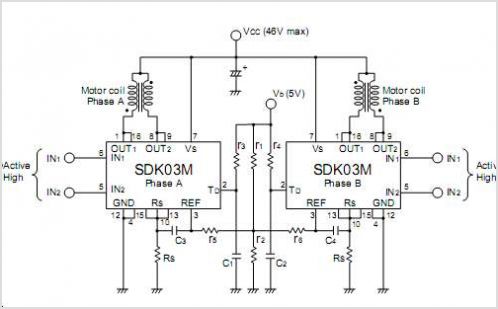
Step Up PSU for LCD

To operate the old Optrex DMC50264N LCD module, a bias voltage of +24V is required. If only low voltage options of 3V to 5V are available, a small DC/DC converter can be constructed, as the LCD module consumes very little current. Various integrated circuits are available for this purpose. The MC34063 was selected for the design due to availability from previous projects. The schematic follows typical configurations from the datasheet. Given the low current requirements, a small SMD inductor can be utilized; however, a larger inductor, approximately 1 cm in height, was used in this case due to availability.
The design of a DC/DC converter for the Optrex DMC50264N LCD module involves converting a low input voltage (3V to 5V) to a higher output voltage of +24V. The MC34063 is a versatile DC-DC converter IC that can be configured as a step-up (boost) converter, making it suitable for this application. The typical circuit configuration includes an inductor, a diode, and output capacitors in addition to the MC34063.
In the circuit, the input voltage is connected to the inductor, which stores energy when the switch inside the IC is closed. When the switch opens, the energy stored in the inductor is released to the output through the diode, raising the voltage to the desired level. The output capacitor smooths the voltage, ensuring a stable supply to the LCD module.
Due to the low current requirements of the LCD, a smaller SMD inductor would typically be preferred for compactness. However, in this case, a larger inductor was used, measuring about 1 cm in height, likely due to constraints in component availability. The choice of inductor affects the efficiency and response time of the converter, so careful consideration of the inductor's specifications is essential.
Overall, the MC34063-based boost converter effectively provides the necessary +24V bias for the Optrex DMC50264N LCD module, making it a practical solution for applications where only low input voltages are available. Proper layout and component selection will ensure reliable operation and performance of the circuit.To start old Optrex DMC50264N LCD module you need to get +24V LCD bias voltage Where to get it if you have only low voltage 3 5V As LCD module drains very low current, it is possible to build very small DC/DC converter. There are lots of chips designed for this. I used MC34063, as I already had few of them in some old trash boards. The schem atics are typical, used from datasheet. As the current is very low, it is possible to use very small SMD inductance. I didn`t find very small, so I used quite big- about 1cm tall 🔗 External reference
The design of a DC/DC converter for the Optrex DMC50264N LCD module involves converting a low input voltage (3V to 5V) to a higher output voltage of +24V. The MC34063 is a versatile DC-DC converter IC that can be configured as a step-up (boost) converter, making it suitable for this application. The typical circuit configuration includes an inductor, a diode, and output capacitors in addition to the MC34063.
In the circuit, the input voltage is connected to the inductor, which stores energy when the switch inside the IC is closed. When the switch opens, the energy stored in the inductor is released to the output through the diode, raising the voltage to the desired level. The output capacitor smooths the voltage, ensuring a stable supply to the LCD module.
Due to the low current requirements of the LCD, a smaller SMD inductor would typically be preferred for compactness. However, in this case, a larger inductor was used, measuring about 1 cm in height, likely due to constraints in component availability. The choice of inductor affects the efficiency and response time of the converter, so careful consideration of the inductor's specifications is essential.
Overall, the MC34063-based boost converter effectively provides the necessary +24V bias for the Optrex DMC50264N LCD module, making it a practical solution for applications where only low input voltages are available. Proper layout and component selection will ensure reliable operation and performance of the circuit.To start old Optrex DMC50264N LCD module you need to get +24V LCD bias voltage Where to get it if you have only low voltage 3 5V As LCD module drains very low current, it is possible to build very small DC/DC converter. There are lots of chips designed for this. I used MC34063, as I already had few of them in some old trash boards. The schem atics are typical, used from datasheet. As the current is very low, it is possible to use very small SMD inductance. I didn`t find very small, so I used quite big- about 1cm tall 🔗 External reference





